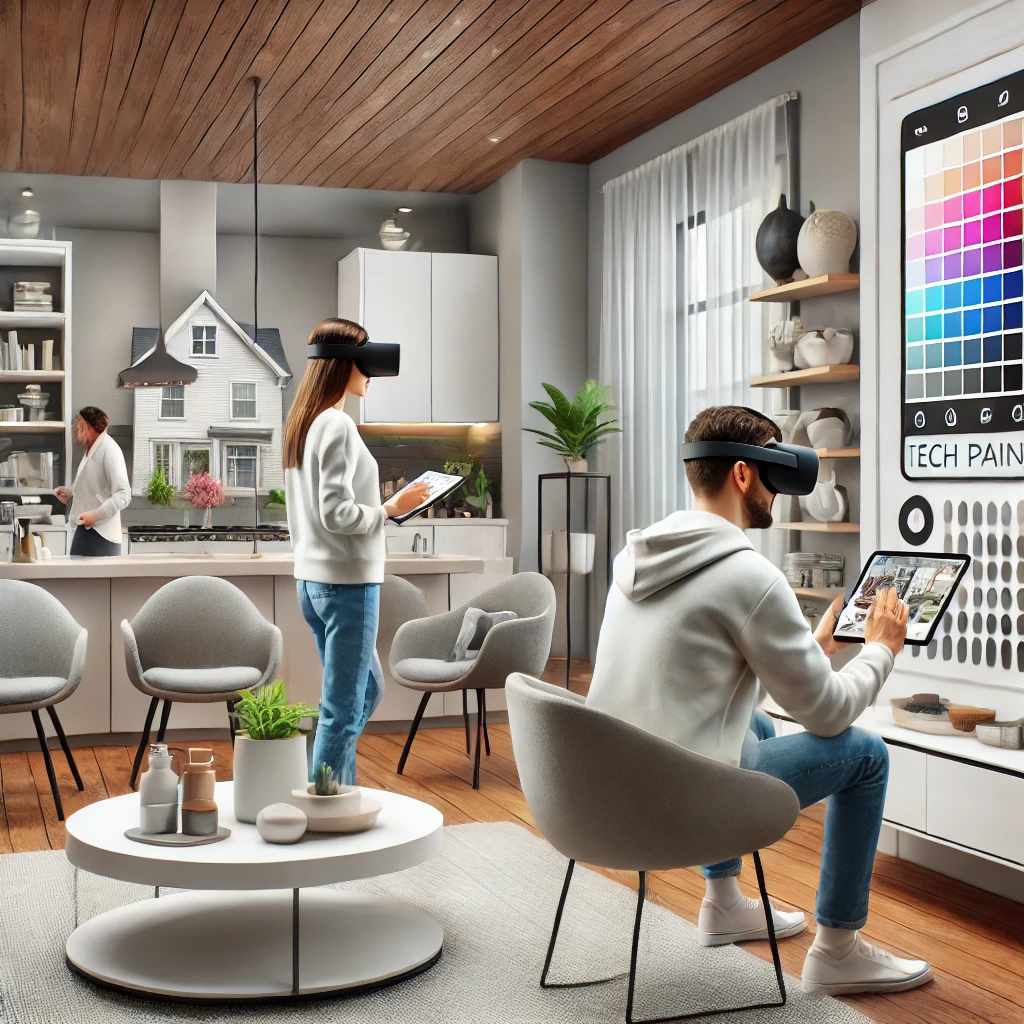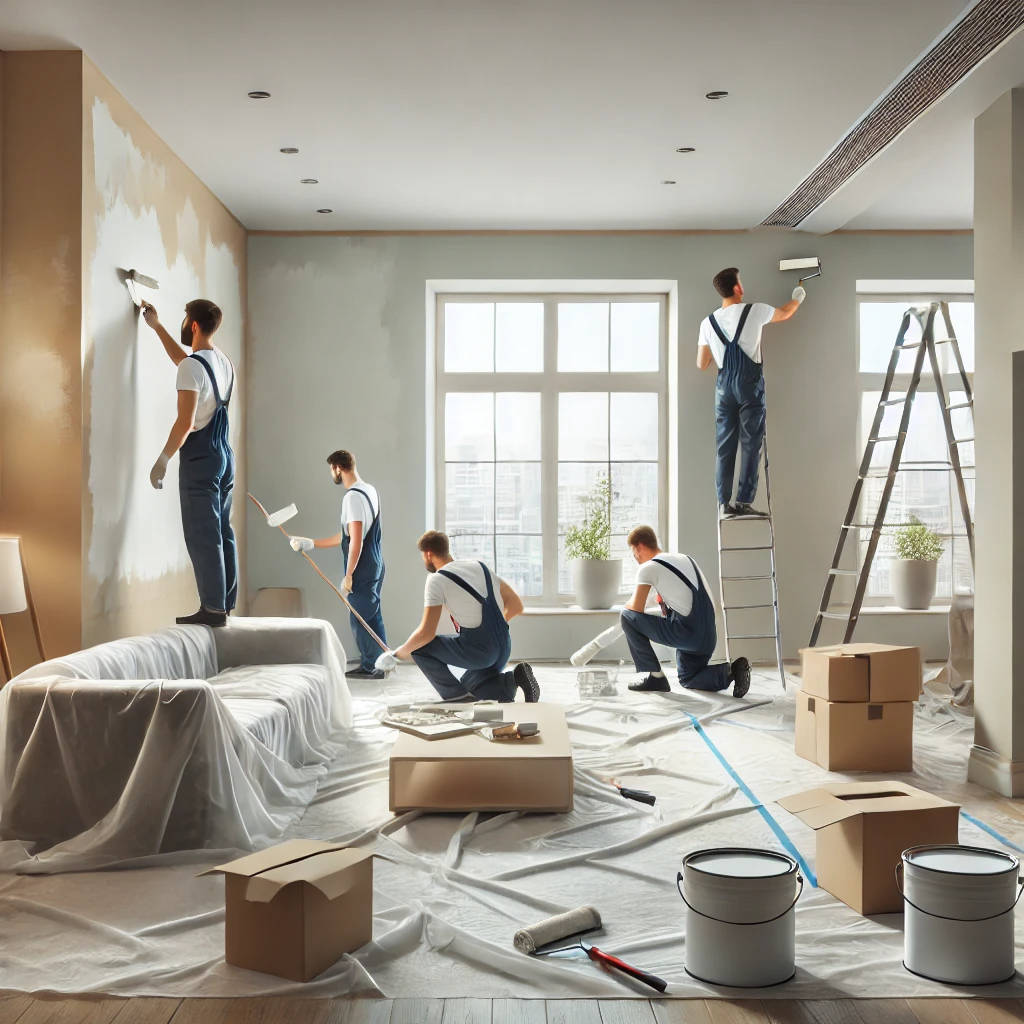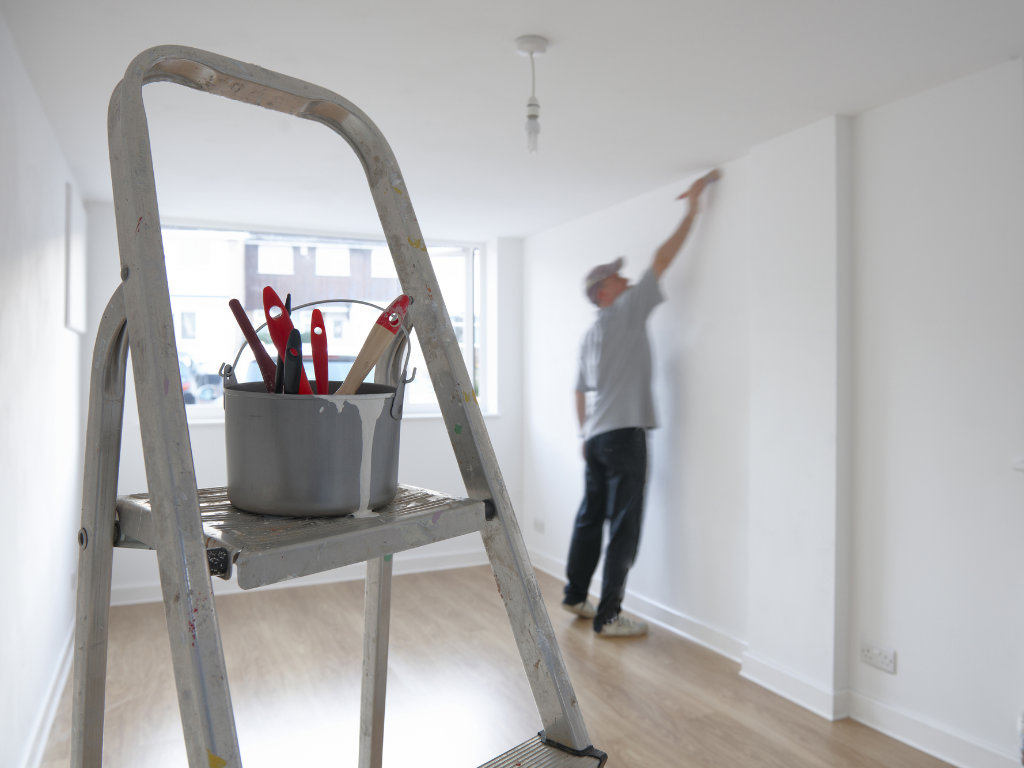Introduction: Technology is revolutionizing the way we decorate interiors, with smart paint and tech decorating…
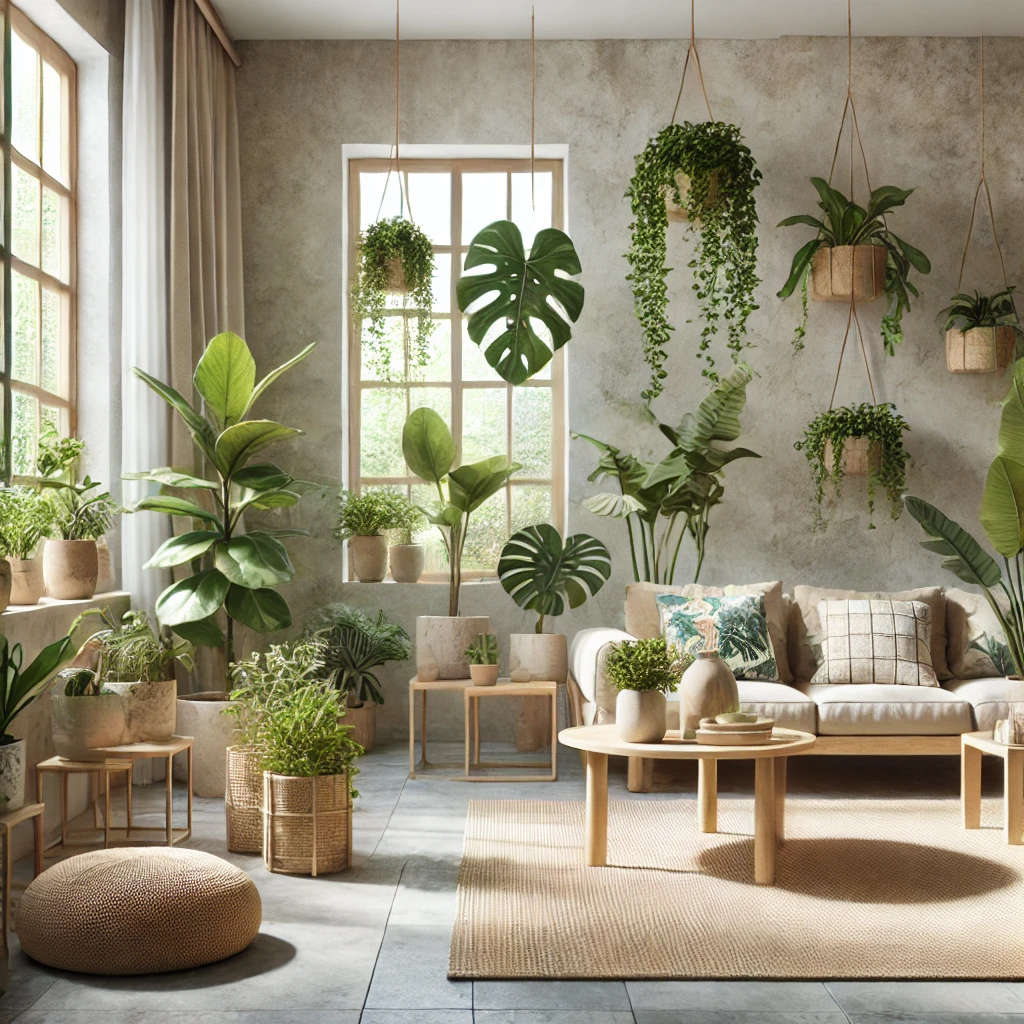
🌿 Biophilic Design: Transforming Spaces with Nature-Inspired Painting
Biophilic design is revolutionizing interior spaces by seamlessly merging the beauty of nature with modern aesthetics. This design approach goes beyond adding greenery—it’s about creating immersive environments that enhance well-being by fostering a connection to the natural world. Whether through nature-inspired colors, textures, or eco-conscious materials, biophilic design can transform your home or business into a tranquil retreat. Let’s explore how decorators and painters can harness these principles to stay on trend and deliver serene, sustainable spaces.
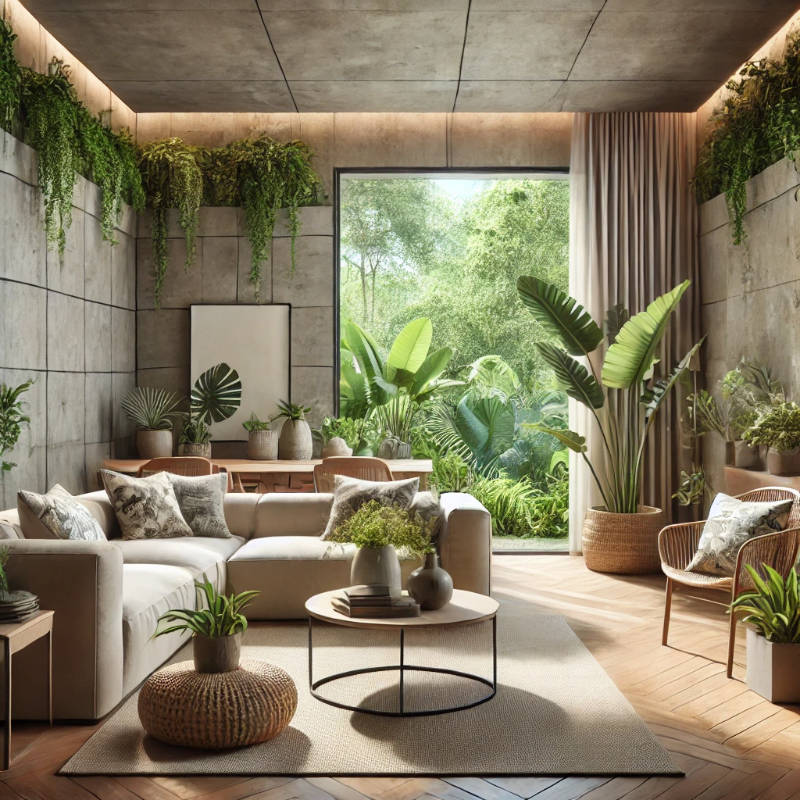
Nature-Inspired Color Palettes: A Foundation for Calm
Colors rooted in nature are at the heart of biophilic design. Earthy tones and hues inspired by forests, oceans, and skies evoke a sense of calm, balance, and connection. These palettes work across diverse settings, from residential sanctuaries to rejuvenating commercial spaces.
Popular Nature-Inspired Colors:
- Forest Greens and Moss: Evoke the tranquility of lush woodlands.
- Earthy Browns and Terracotta: Bring grounding warmth to interiors.
- Ocean Blues and Sky Hues: Reflect openness and serenity.
- Stone Grays and Sand Tones: Add subtle sophistication with natural neutrals.
Why It Matters: Offering these palettes caters to clients seeking wellness-focused designs that feel timeless and versatile.
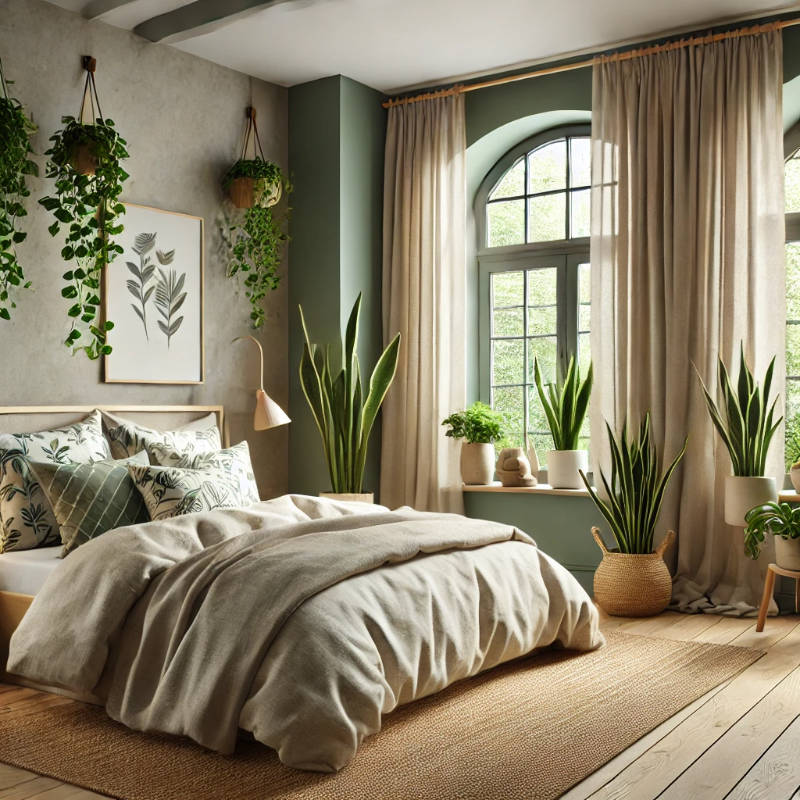
Textures and Materials: A Tactile Connection
Biophilic design extends beyond color by emphasizing natural textures that bring the outdoors in. From textured wall finishes to wood and stone-like accents, these elements create a tangible connection to nature.
Key Biophilic Textures:
- Textured Plaster and Limewash: Add organic depth to walls.
- Wood Accents: Use natural or painted wood for warmth and authenticity.
- Stone and Concrete Finishes: Mimic rugged outdoor elements.
- Plant-Based Wallpapers: Feature botanical prints or natural fibers like bamboo and jute.
Why It Matters: Incorporating tactile elements makes spaces more engaging and aligned with the soothing qualities of nature.
Eco-Friendly Materials: Designing for Sustainability
Sustainability is integral to biophilic design. Using eco-conscious materials reduces environmental impact while enhancing the health of interior spaces.
Top Eco-Friendly Materials:
- Low-VOC Paints: Improve indoor air quality by minimizing harmful emissions.
- Recycled and Natural Wallpapers: Add beauty and sustainability with eco-friendly options.
- Sustainable Wood: Highlight the importance of conservation with responsibly sourced materials.
- Plant-Based Fabrics: Linen, hemp, and cotton enhance softness and eco-awareness.
Why It Matters: Today’s clients prioritize green living, making these choices essential for meeting demand.
Indoor Plants: Living Design Elements
The simplest yet most impactful way to embrace biophilic design is by incorporating live plants. They improve air quality, reduce stress, and provide a direct connection to nature.
Best Indoor Plants for Biophilic Spaces:
- Fiddle Leaf Fig: A dramatic statement piece.
- Snake Plant: Ideal for air purification.
- Monstera Deliciosa: Adds a bold, tropical vibe.
- Pothos and Ivy: Perfect for trailing greenery.
Why It Matters: Offering plant integration advice sets decorators apart while elevating designs with vibrant, living decor.
Biophilic Patterns: Visual Nature-Inspired Design
Biophilic patterns mimic natural forms like leaves, water, and trees, allowing decorators to bring nature indoors visually. Whether through wallpapers, textiles, or murals, these patterns amplify the biophilic experience.
Popular Patterns:
- Botanical Prints: Timeless leaf and floral motifs.
- Water-Inspired Waves: Flowing designs for serene spaces.
- Stone and Rock Textures: Add depth with organic patterns.
- Branch Silhouettes: Create artistic, immersive environments.
Why It Matters: Nature-inspired designs are versatile and can be customized to match any style or space.
🎧 Listen Now: Biophilic Design: Nature’s Touch in Interiors 🎙️
Explore how biophilic design brings nature indoors, enhancing well-being and creating harmony between spaces and the natural world.
🎙️ Powered by iHeart Podcasts
Natural Light: Amplifying Biophilic Design
Maximizing natural light is a cornerstone of biophilic design. Pairing this with reflective, light-enhancing paint colors creates bright, open interiors that feel connected to the outdoors.
Best Colors for Light Reflection:
- Soft Whites and Light Grays: Reflect and expand natural light.
- Pale Blues and Greens: Reinforce outdoor connections.
- Warm Neutrals: Add a sunlit glow.
Why It Matters: Enhancing natural light improves mood and boosts the biophilic qualities of a space, making it more inviting.
How to Leverage Biophilic Design Trends
- Nature-Inspired Color Consultations: Tailor palettes to create serene atmospheres that resonate with your clients’ goals.
- Incorporate Textures and Materials: Add tactile depth with eco-friendly, natural options like limewash or wood.
- Promote Indoor Plants and Patterns: Offer advice on plant placement and biophilic designs to create immersive spaces.
Conclusion:
Biophilic design is reshaping interiors by blending natural elements with sustainable practices. From earthy color palettes and textures to eco-friendly materials and indoor plants, this trend fosters well-being while staying stylish and environmentally responsible. Decorators and painters who embrace these principles can deliver transformative, timeless spaces that reflect the beauty of nature.
Additional Resources for Biophilic Design Enthusiasts
If you’re inspired by the principles of biophilic design and want to dive deeper into the topic, here are some valuable resources to explore:
- Book Recommendation: Biophilic Design: The Theory, Science, and Practice of Bringing Buildings to Life by Stephen R. Kellert, Judith Heerwagen, and Martin Mador. This insightful book explores the science and philosophy behind integrating nature into design, making it a must-read for decorators and design enthusiasts alike.
- Learn More About Nature’s Impact: Discover how connecting with nature can improve mental health and well-being in this comprehensive Harvard Health Blog.
- Sustainable Design Practices: Explore green building ideas and certifications through the U.S. Green Building Council (USGBC).
These resources provide both theoretical insights and practical tips for embracing biophilic design in your spaces, ensuring your journey toward a more natural and nurturing environment is well-supported.

